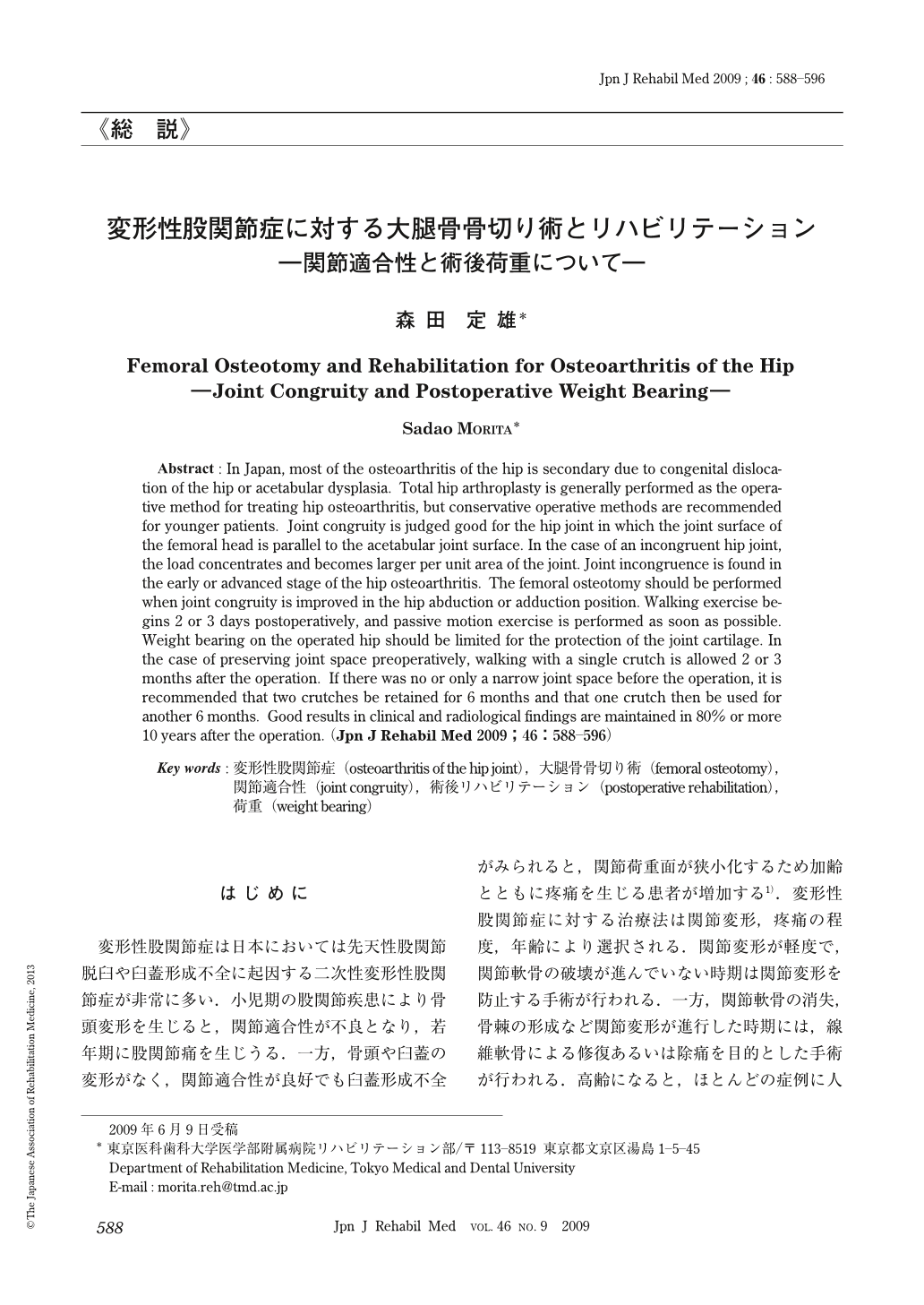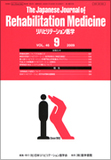Japanese
English
- 販売していません
- Abstract 文献概要
- 1ページ目 Look Inside
- 参考文献 Reference
はじめに
変形性股関節症は日本においては先天性股関節脱臼や臼蓋形成不全に起因する二次性変形性股関節症が非常に多い.小児期の股関節疾患により骨頭変形を生じると,関節適合性が不良となり,若年期に股関節痛を生じうる.一方,骨頭や臼蓋の変形がなく,関節適合性が良好でも臼蓋形成不全がみられると,関節荷重面が狭小化するため加齢とともに疼痛を生じる患者が増加する1).変形性股関節症に対する治療法は関節変形,疼痛の程度,年齢により選択される.関節変形が軽度で,関節軟骨の破壊が進んでいない時期は関節変形を防止する手術が行われる.一方,関節軟骨の消失,骨棘の形成など関節変形が進行した時期には,線維軟骨による修復あるいは除痛を目的とした手術が行われる.高齢になると,ほとんどの症例に人工股関節置換術が行われる.
人工股関節は人工関節のデザインの改良や手術手技の進歩に伴い,成績は安定し,長期成績も良好になった.かつてはゆるみによる再置換術が必要となっても一生の間に1回の再置換術で済むように60歳以上が良い手術適応年齢とされたが2),最近は適応年齢が引き下げられる傾向にあり,40歳台でも疼痛があり,患者が希望する場合は人工股関節置換術が積極的に行われる.それに対して大腿骨骨切り術を中心とした関節温存手術は,関節修復による手術効果がみられるまでに時間がかかり,リハビリテーション(以下,リハ)にも時間がかかるため,入院期間が人工股関節置換術より長くなることから,現在の医療制度では敬遠され,行われることが少なくなりつつある3).このような風潮の中で,人工物に頼らず,自分の骨を残して,軟骨の再生により関節機能を回復させる治療法の意義を再認識すべきではないかと考える.青壮年期の初期から進行期変形性股関節症患者の保存的治療などで患者と接する機会の多いリハ医にとって,股関節機能と関節適合性や骨棘の発達など詳細な関節形態についての知識を深めることは有意義であろう.本稿では変形性股関節症の股関節形態と関節温存手術である大腿骨骨切り術を中心に概説する.
Abstract : In Japan, most of the osteoarthritis of the hip is secondary due to congenital dislocation of the hip or acetabular dysplasia. Total hip arthroplasty is generally performed as the operative method for treating hip osteoarthritis, but conservative operative methods are recommended for younger patients. Joint congruity is judged good for the hip joint in which the joint surface of the femoral head is parallel to the acetabular joint surface. In the case of an incongruent hip joint, the load concentrates and becomes larger per unit area of the joint. Joint incongruence is found in the early or advanced stage of the hip osteoarthritis. The femoral osteotomy should be performed when joint congruity is improved in the hip abduction or adduction position. Walking exercise begins 2 or 3 days postoperatively, and passive motion exercise is performed as soon as possible. Weight bearing on the operated hip should be limited for the protection of the joint cartilage. In the case of preserving joint space preoperatively, walking with a single crutch is allowed 2 or 3 months after the operation. If there was no or only a narrow joint space before the operation, it is recommended that two crutches be retained for 6 months and that one crutch then be used for another 6 months. Good results in clinical and radiological findings are maintained in 80% or more 10 years after the operation.

Copyright © 2009, The Japanese Association of Rehabilitation Medicine. All rights reserved.


